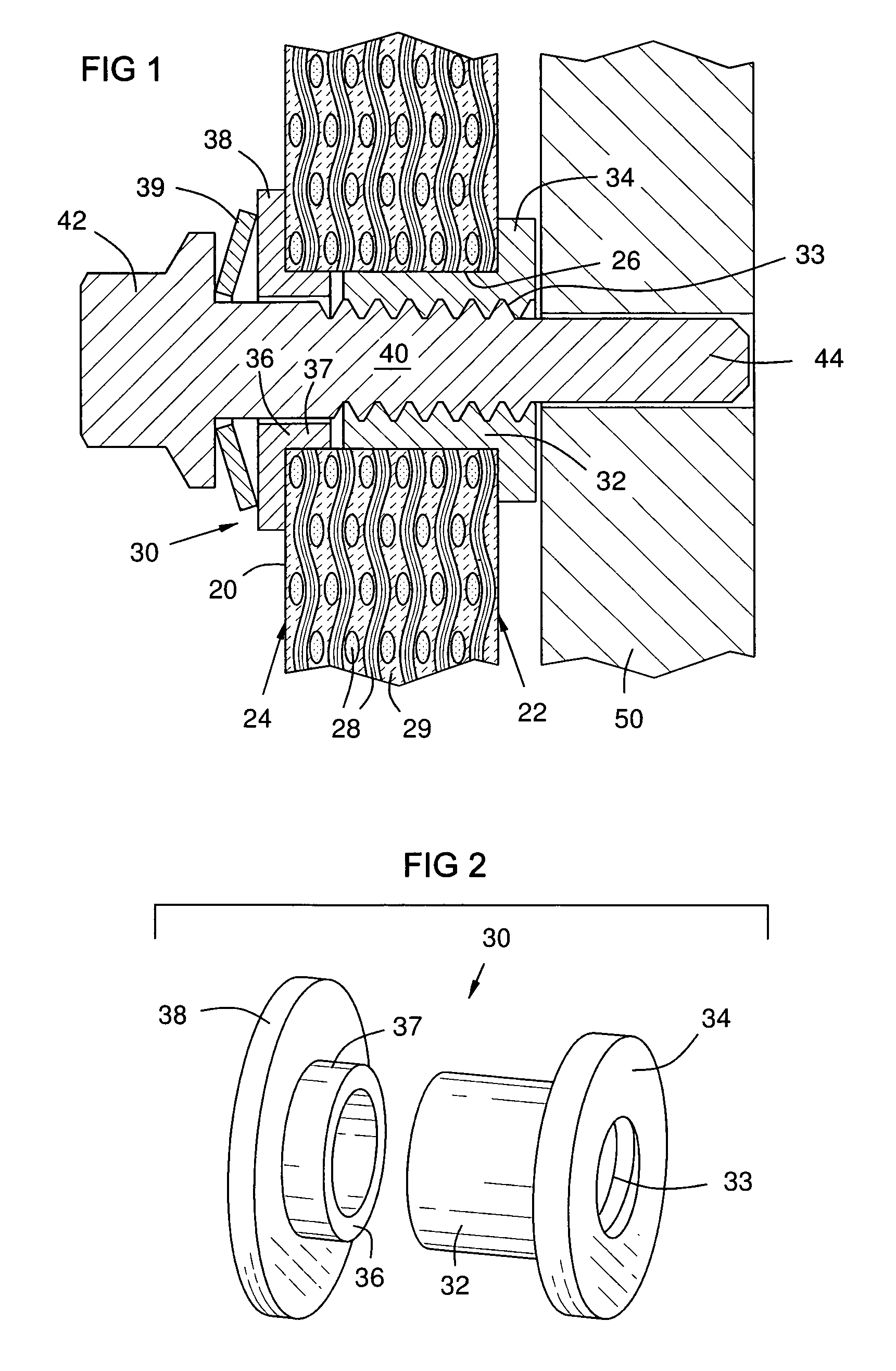Attachment for ceramic matrix composite component
a composite material and ceramic matrix technology, applied in the direction of fastening means, machines/engines, waterborne vessels, etc., can solve the problems of ceramic components and their connections being subject to wide thermal changes, ceramic components are difficult to attach to metallic components, and ceramic materials cannot be welded to metal
- Summary
- Abstract
- Description
- Claims
- Application Information
AI Technical Summary
Benefits of technology
Problems solved by technology
Method used
Image
Examples
Embodiment Construction
[0015]FIG. 1 shows a ceramic matrix composite structure 20 with opposed surfaces 22 and 24 and a hole 26 through the structure. Ceramic fibers 28 are disposed between the surfaces 22, 24 and are oriented in substantial alignment with the surfaces. The fibers may be arranged in multiple woven layers of ceramic fabric as shown, or they may be layered in one or more directions without weaving. The fibers 28 are embedded in a ceramic matrix 29. A metal bushing 30 in the hole 26 comprises a first part 32 with a first flange 34 extending beyond and around the hole 26 against one of the surfaces 22, and a second part 36 with a second flange 38 extending beyond and around the hole 26 against the second surface 24.
[0016]A connecting member 40, such as a pin or bolt, passes through the bushing 30. In FIGS. 1 and 2 the first part 32 of the bushing 30 has internal threads 33, and acts as a nut for a bolt 40 that draws the first and second parts 32, 36 of the bushing 30 toward each other, compre...
PUM
| Property | Measurement | Unit |
|---|---|---|
| temperatures | aaaaa | aaaaa |
| interlaminar compressive stress | aaaaa | aaaaa |
| interlaminar tensile strength | aaaaa | aaaaa |
Abstract
Description
Claims
Application Information
 Login to View More
Login to View More - R&D
- Intellectual Property
- Life Sciences
- Materials
- Tech Scout
- Unparalleled Data Quality
- Higher Quality Content
- 60% Fewer Hallucinations
Browse by: Latest US Patents, China's latest patents, Technical Efficacy Thesaurus, Application Domain, Technology Topic, Popular Technical Reports.
© 2025 PatSnap. All rights reserved.Legal|Privacy policy|Modern Slavery Act Transparency Statement|Sitemap|About US| Contact US: help@patsnap.com



